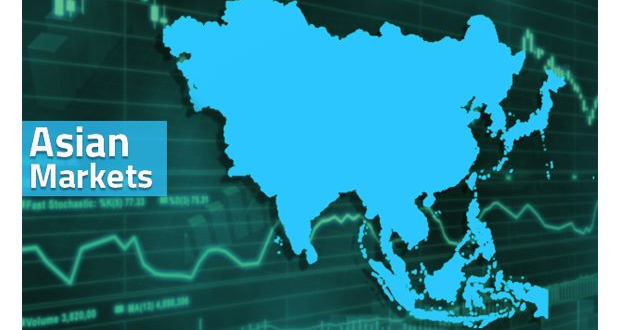SINGAPORE: Asian stocks rose on Wednesday as comments from Federal Reserve Chair Jerome Powell reinforced expectations that U.S. rate cuts were not far off, while the yen struggled at levels last seen in 1986, keeping traders wary of Japanese intervention.
MSCI’s broadest index of Asia-Pacific shares outside Japan was 0.64% higher, boosted by tech stocks, while Japan’s Nikkei jumped 1.4%, stalking the record high touched in March.
Futures indicated European bourses were due to open higher with Eurostoxx 50 futures up 0.5% and German DAX futures up 0.34%. The focus was on France’s political landscape ahead of Sunday runoff election.
The U.S. is back on a “disinflationary path”, Powell said on Tuesday, although he cautioned that policymakers need more data before they can consider cutting interest rates.
Powell’s comments sent U.S Treasury yields 4.3 basis points lower overnight, with the yield on the 10-year note steady at 4.435% in Asian hours on Wednesday, keeping the dollar subdued.
“I thought Powell was pretty balanced – the U.S. is on the right path, but more data is needed,” said Ben Bennett, Asia-Pacific investment strategist at Legal and General Investment Management.
“My interpretation is that cuts are likely this year, with September the probable starting point because there will be new economic forecasts at that meeting.”
Traders are currently pricing in a 69% chance of the Fed cutting rates in September and as many as two rate cuts this year, a far cry from the more than 150 basis points of easing expected at the start of the year.
Investors were also weighing data showing a tight U.S. labour market and will switch their focus to Friday’s nonfarm payrolls data, with U.S. markets shut on Thursday and closing early on Wednesday.
Minutes of the Fed’s last meeting are due later in the day and will offer more clues to its thinking on rates outlook.
The prospect of a U.S. rate cut coming soon has kept a lid on the dollar’s ascent, with the dollar index, which measures the U.S. unit against six rivals, steady at 105.74.
Chinese stocks remained the laggard, with the blue-chip CSI 300 index down 0.14%. Hong Kong’s Hang Seng was 1% higher, led by tech stocks.
Data showed China’s services activity expanded at the slowest pace in eight months and confidence hit a four-year low in June, dragged by slower growth in new orders, suggesting the need for more economic stimulus.
YEN VIGIL
The yen touched a new 38-year low of 161.875 per dollar and has been rooted near those levels since end-June. The yen has dropped more than 12% against the dollar this year, hurt by the wide gap between interest rates in the U.S. and Japan.
That has led to the yen being used as a funding currency for carry trades, where an investor borrows in a currency with low interest rates and invests the proceeds in higher-yielding assets.
Traders have been on the lookout for signs of Japanese authorities intervening in the currency market to prop up the frail yen, with some analysts suggesting that the line in the sand might be further away than current levels.
“We suspect interest on the pair has subsided as intervention threat looms around the 164-165 level,” said Alex Loo, macro strategist at TD Securities in Singapore.
China’s yuan eased to a seven-month low against the dollar, with the central bank nudging the currency’s trading range a little bit lower and hand-holding it to weaken.
Elsewhere, the euro was steady at $1.07437, below the two-week high it hit on Monday, as opponents of France’s National Rally (RN) stepped up their bid to block the far-right party from power.
Sterling last fetched $1.26875 of the UK general election on Thursday where the opposition Labour party is widely expected to win a landslide victory.
In commodities, oil prices were higher as U.S. industry data boosted hopes of solid fuel demand during the summer driving season in the top oil consuming nation.
Brent crude oil futures rising 0.5% to $86.67 a barrel, while U.S. West Texas Intermediate crude futures were 0.46% higher at $83.19 per barrel. – Reuters
 BeritaKini.biz Berita Viral Terkini di Malaysia
BeritaKini.biz Berita Viral Terkini di Malaysia





